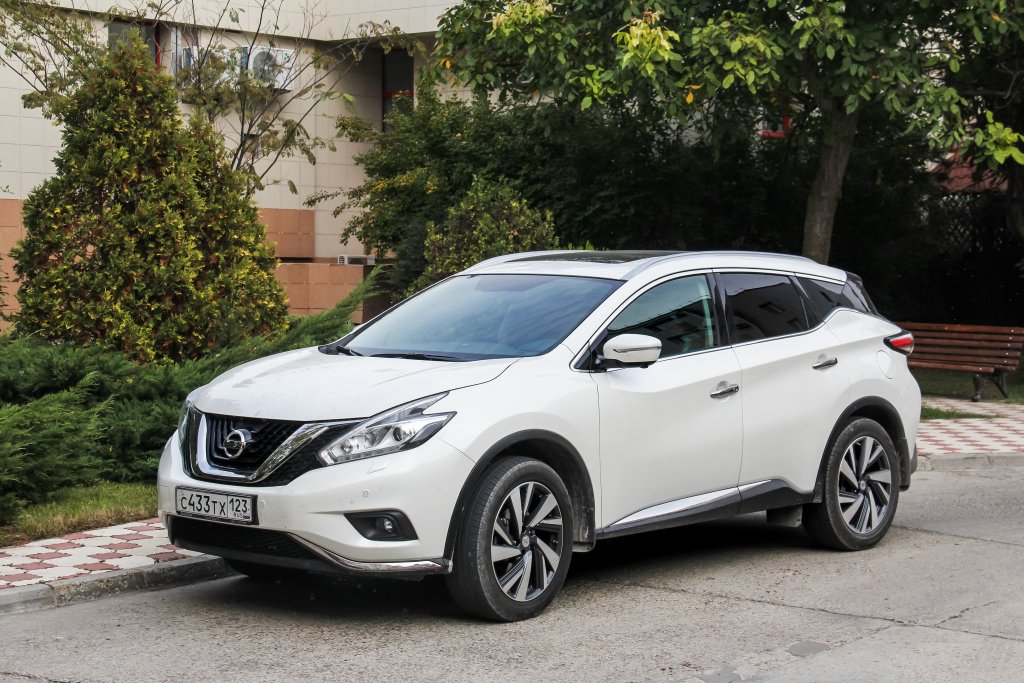Nissan’s SUV lineup in the U.S. was well-established with the Xterra and Pathfinder at the start of the 21st century. However, the automaker lacked a refined crossover for the U.S. market. This shortfall led to the development of the Nissan Murano, which debuted for the 2003 model year.
Designed at Nissan’s California studios, the Murano shared the Altima’s underpinning but established itself with a distinctive and flowing (some would say polarizing) design. Its 20 years of production have created a vibrant second-hand market for this two-row family hauler.
However, assuming every Nissan Murano model is a stellar example of reliability could prove a costly mistake. Like most cars, the Murano has its share of problem-filled years. Keep reading as we explore the best and worst years for this Nissan. These details are equally as useful to current Murano owners, who might get a glimpse into their automotive future.
These recommendations come from a review of Nissan Muranos with an installed FIXD sensor. This information creates the FIXD Reliability Score, which measures engine dependability. FIXD also conducted a detailed survey of Murano owners to produce the Owner Reliability Score. The results uncover reliability perceptions, upkeep costs, and other ownership experiences.
We then compare the FIXD Reliability and Owner Reliability Scores for each Murano model year while analyzing the corresponding data for safety, fuel economy, and resale value.
Here’s an overview of the results.
| Best Years | Why? | Worst Years | Why? |
| 2016, 2018-2019, 2021 |
Stellar engine and owner reliability scores, exceptional crash test results, and no reports of expensive powertrain repairs |
2003-2004, 2006-2007 |
First year of the first generation (2003), very low engine reliability ratings, and a history of expensive engine and/or transmission repairs |
| 2011, 2013 |
Strong owner reliability ratings, low maintenance costs, and no history of costly engine and transmission repairs |
2009-2010, 2012, 2014 |
First year of the second generation (2009), a high number of expensive engine or transmission repairs, and above-average repair and maintenance costs |
| 2005 |
Zero reports of pricey engine or transmission work, acceptable owner reliability scores, and below-average repair and maintenance costs |
2015, 2017, 2020 |
First year of the third generation (2015), and an elevated risk for pricey engine or transmission work |
It’s worth noting that Nissan didn’t produce a Murano for 2008, skipping a year in anticipation of the second-generation edition.
Nissan Murano Engine Reliability Score, Safety Ratings & MPG Year by Year
The best and worst Nissan Murano year is based on:
- FIXD Reliability Scores (engine reliability)
- Owner Reliability Scores
- National Highway Transportation Safety Administration (NHTSA) safety ratings
- EPA fuel economy estimates
- Kelley Blue Book (KBB) market value compared to yearly costs for maintenance and repair
The year-by-year breakdown explores this in detail.
If you’re in the market for a car, take a look at our article on the USA’s most reliable and cheapest to repair vehicles. Don’t get stuck with a lemon; use our data to help you shop.
Engine Reliability Score – Over The Years
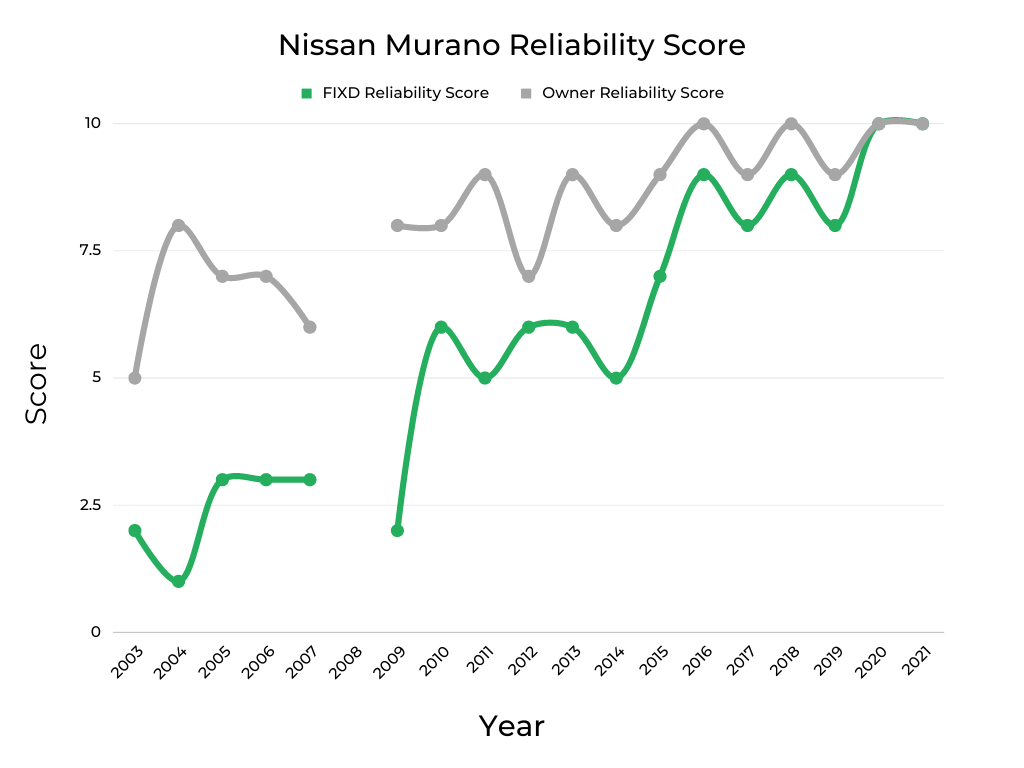
The graph highlights the two indexes that determine engine reliability:
- FIXD Reliability Score (green): The number of check engine lights detected in Nissan Muranos with a FIXD sensor. This measurement is weighted by mileage.
- Owner Reliability Score (gray): How owners perceive the reliability of their Nissan Muranos, according to FIXD surveys. Owners are asked about the suitability of their vehicles for trips of different lengths. For instance, a Murano will receive the lowest score if it can only handle a short point A to point B trip. Cross-country capability gets the highest rating.
Both scores use a 1 (lowest) to 10 (highest) scale; 5 is average.
The two indexes seldom align as one measurement (FIXD Reliability Score) covers something definitive (the frequency of check engine lights). At the same time, the second-ranking (Owner Reliability Score) is more subjective (owners’ perceptions about dependability).
Many people take pride in their cars (no matter the age) and tend to believe their vehicles are more reliable than they may actually be. Further, some people are accepting of the fact that older vehicles generate more check engine lights.
So, these two rankings don’t have to align. Instead, we watch for similar trends that can help us spot problems. For example, both indexes dip for the 2014 and 2017 model years. It is no surprise that both editions are on the worst years list. It doesn’t always happen this way, but an initial glance can be an excellent starting point for determining these rankings.
Sometimes other factors have greater importance than high scores. The 2020 Murano gets a 9 for its FIXD Reliability Score and a 10 for its Owner Reliability Score. Still, a record of expensive engine and transmission repairs assigns this Murano to worst year status (this is spelled out later).
Read the Nissan Check Engine Light article to learn the most common causes of check engine lights in Muranos and other popular Nissans.
NHTSA Safety Score – Over The Years
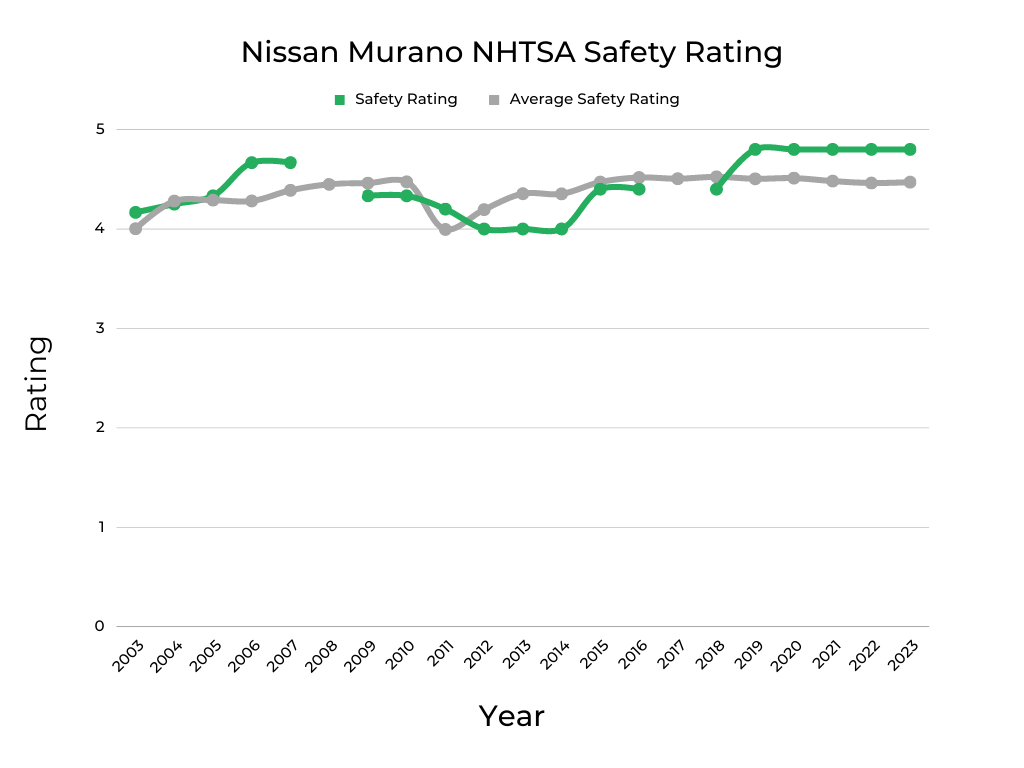
The Murano enjoys a solid safety rating (green line) in NHTSA crash tests, never going below 4.0 (out of 5) and averaging a 4.4 among all model years. This performance is on par or ahead of all the vehicles that NHTSA analyzes (gray line).
The only exception is for the 2012-2014 model years, which followed the introduction of stricter testing standards. Rather than make an interim fix as some automakers did, Nissan chose to ride things out until the launch of the third-generation Murano for 2015.
While not every owner may have selected the Murano for its commendable safety record, many benefit from how the vehicle performs in an accident. Surveys reveal that 58% of Murano owners use their cars for family transportation, and another 25% use their Nissans for “lots of driving” (commuting and traveling).
There’s another benefit to driving a safe vehicle; it keeps insurance rates low.
If you live in one of the states listed below, we can show you the cheapest vehicles to insure in yours.
| What Used Cars Are the Cheapest To Insure In: |
|---|
| Ohio |
| North Carolina |
| Michigan |
| Georgia |
| Texas |
| New York |
| Illinois |
| Pennsylvania |
| California |
MPG – Over The Years

Don’t equate the Murano with compact crossovers like the Honda CR-V. This Nissan is a larger (and heavier) vehicle with V6 power. So, fuel economy isn’t as competitive.
The first and second generations chug along with an average of 20 MPG. However, third-generation improvements give a 15%-20% boost to efficiency at the pump enabling newer Muranos to deliver 23-24 MPG.
Despite an abundance of crossovers on the market, few are direct competitors to the Nissan Murano. The closest is the Ford Edge. It’s also fair to put the Honda Passport in the mix, but the 2020 relaunch (after a two-decade absence) and its newness means a lack of MPG history for this Honda.
Here’s how the Murano and Edge compare in a head-to-head MPG matchup.
| Nissan Murano | Ford Edge | |
| 2010 | 20 MPG | 20 MPG |
| 2015 | 24 MPG | 22 MPG |
| 2020 | 23 MPG | 23 MPG |
Neither of these crossovers wins a fuel-sipping award. And a look at the chart shows that both vehicles are closely matched for MPG performance. Yet, most Edge model years (2011 and later) came with a four-cylinder for the base engine. So, Nissan deserves a tip of the hat for squeezing every bit of energy out of the V6.
Current Market Value of All Nissan Murano Years & Cost Per Year to Repair and Maintain Each
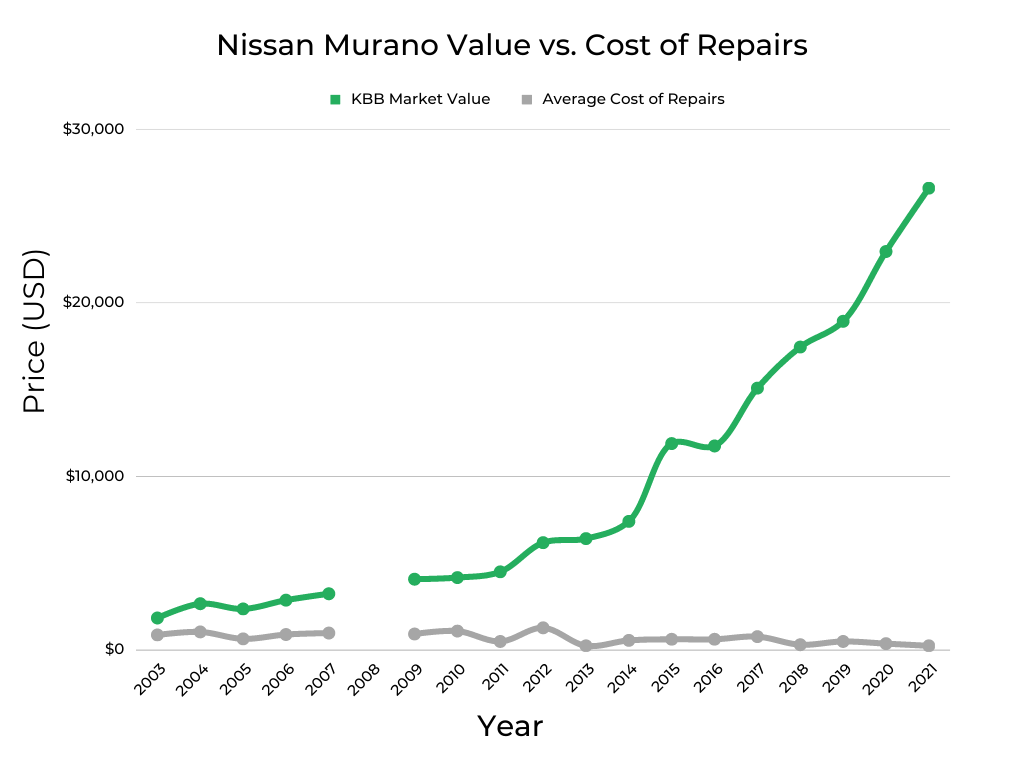
High maintenance and repair costs can drag down a car’s resale value. But, the average Kelley Blue Book (KBB) market value (green line) for the Nissan Murano shows a gentle increase for each newer model year (exactly how it should be). There’s a slight spike in the market value of the 2015 Murano, but this is attributed to below-average mileage from the surveyed samples. It’s an identical issue with the 2004 and 2012 model years.
At the same time, upkeep expenses (gray line) don’t fluctuate significantly from year to year. Among all Murano years, owners reported spending an average of $697 to keep their vehicles on the road.
A few model years far exceed this amount. In particular, the 2010 and 2012 Murano cost owners $1,100 and $1,286 (respectively) in 2022 for maintenance and repair work. The 2004 Murano isn’t too far behind, with an average of $1,050 in upkeep expenses. Interestingly, these excessive costs don’t impact resale value.
Unsurprisingly, the older a Murano is, the more expensive it is to maintain. First-generation models have average yearly upkeep expenses of $892, which drops to $771 for the second generation.
These numbers make the third-generation Murano appear like a bargain, with the typical owner spending $495 for annual repair and maintenance. However, consumable parts may not be fully baked into these numbers (newer models aren’t likely to need new tires and brake pads for a while).
When shopping for a used Nissan Murano, it’s important to keep in mind that not all vehicles are cared for equally. To protect yourself from lemons, take along a FIXD Sensor on your test drive. FIXD connects to a free app on your smartphone to tell you more about the vehicle you’re checking out, including check engine lights and other hidden issues that the owner or dealership may be attempting to hide. Click here to learn more and get FIXD for only $19.99 (regular price $59).
Important Features Timeline
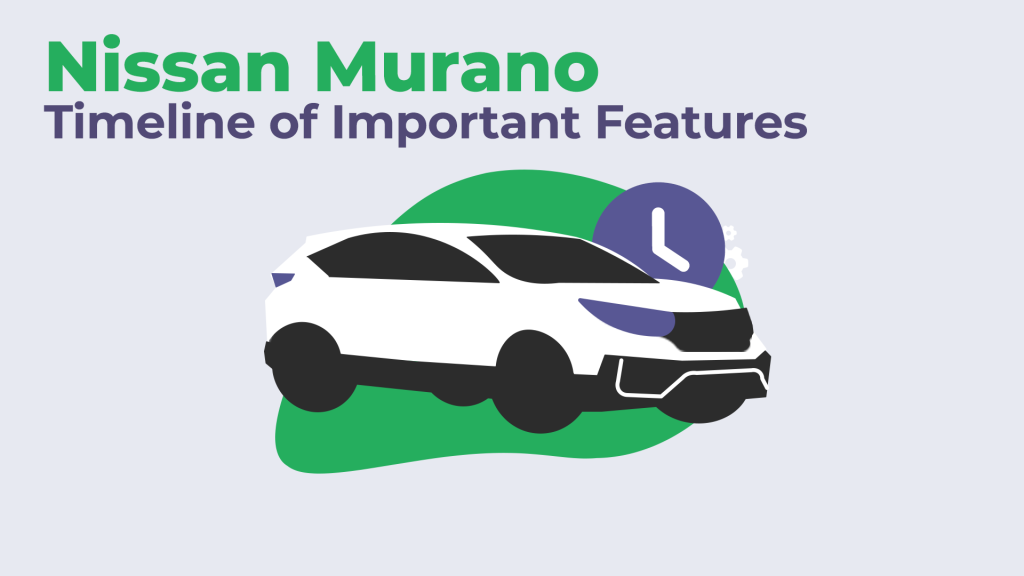
2003: Debut of the Nissan Murano
2004: A power driver’s seat is standard, as is pre-wiring for satellite radio
2005: Lower-priced Murano S appears as the base trim
2006: Revised exterior styling; a 7-inch LCD display is standard on all trims
2007: A tire-pressuring monitor system (TPMS) is standard on all versions
2009: Launch of the second-generation Nissan Murano
2010: Front-wheel drive is available on the top-tier LE trim; keyless entry/ignition is standard
2011: The Murano CrossCabriolet convertible appears; minor styling updates
2012: The LE is available with a Platinum Edition upgrade
2013: New safety features added, including blind-spot monitoring and lane-departure warning
2014: No major changes; last year of the second generation
2015: Debut of the third-generation Murano
2016: A USB port is standard: Bose sound system gets eleven speakers (from nine)
2017: Apple CarPlay and a driver attention warning are added to the standard equipment
2018: All Muranos get forward collision warning, automatic emergency braking, and navigation
2019: Refreshed front end; new safety options include adaptive cruise control
2020: Advanced safety features are available on the base Murano S
2021: All trims get a standard suite of advanced safety technology
2022: The SV gets heated front seats and leatherette upholstery
2023: No major changes
Best Years of the Nissan Murano
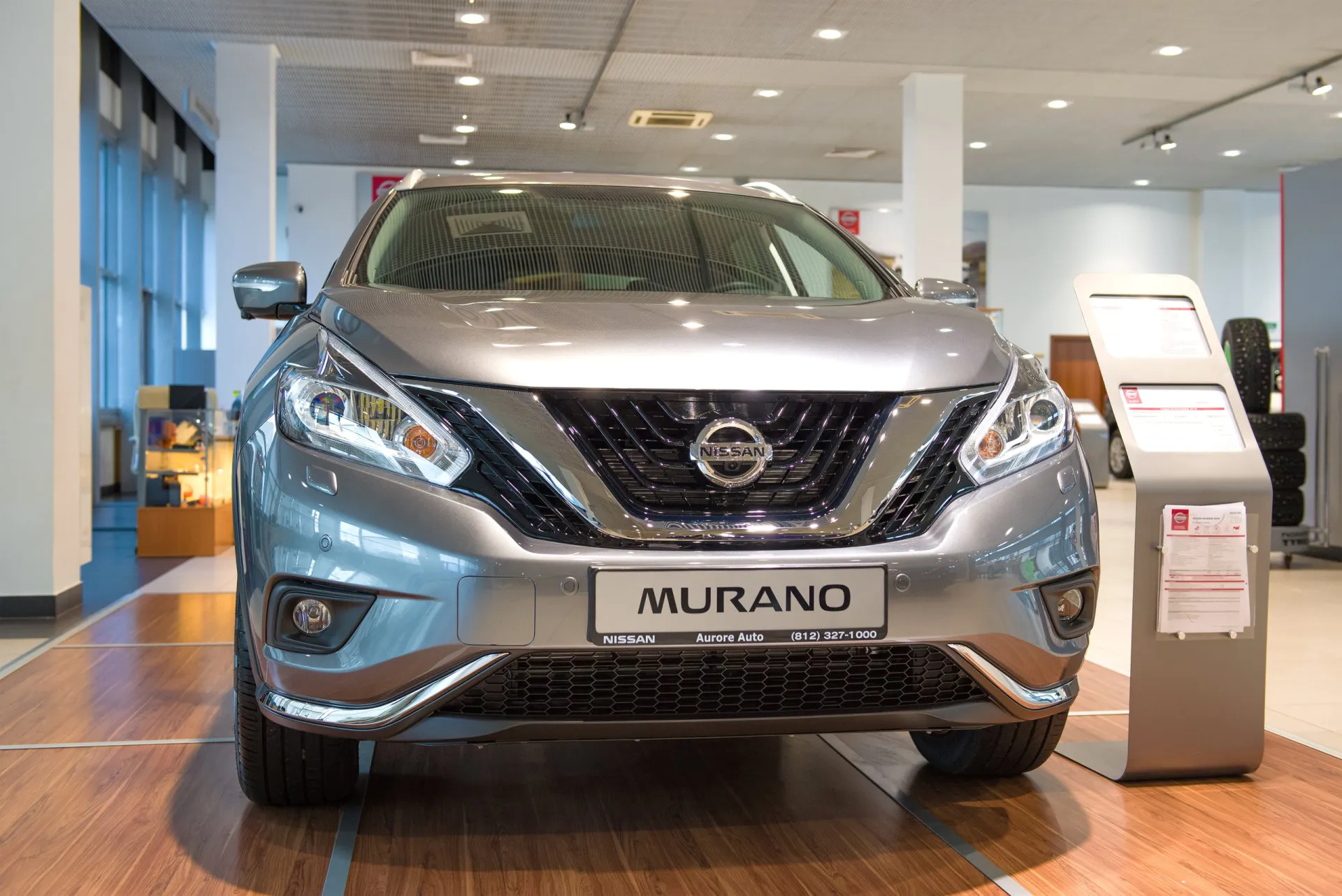
FIXD Reliability and Owner Reliability Scores, NHTSA safety testing, and EPA fuel economy determine the best years of the Nissan Murano. Common diagnostic trouble codes (DTCs) also help determine the results.
2016, 2018-2019, and 2021 Nissan Murano
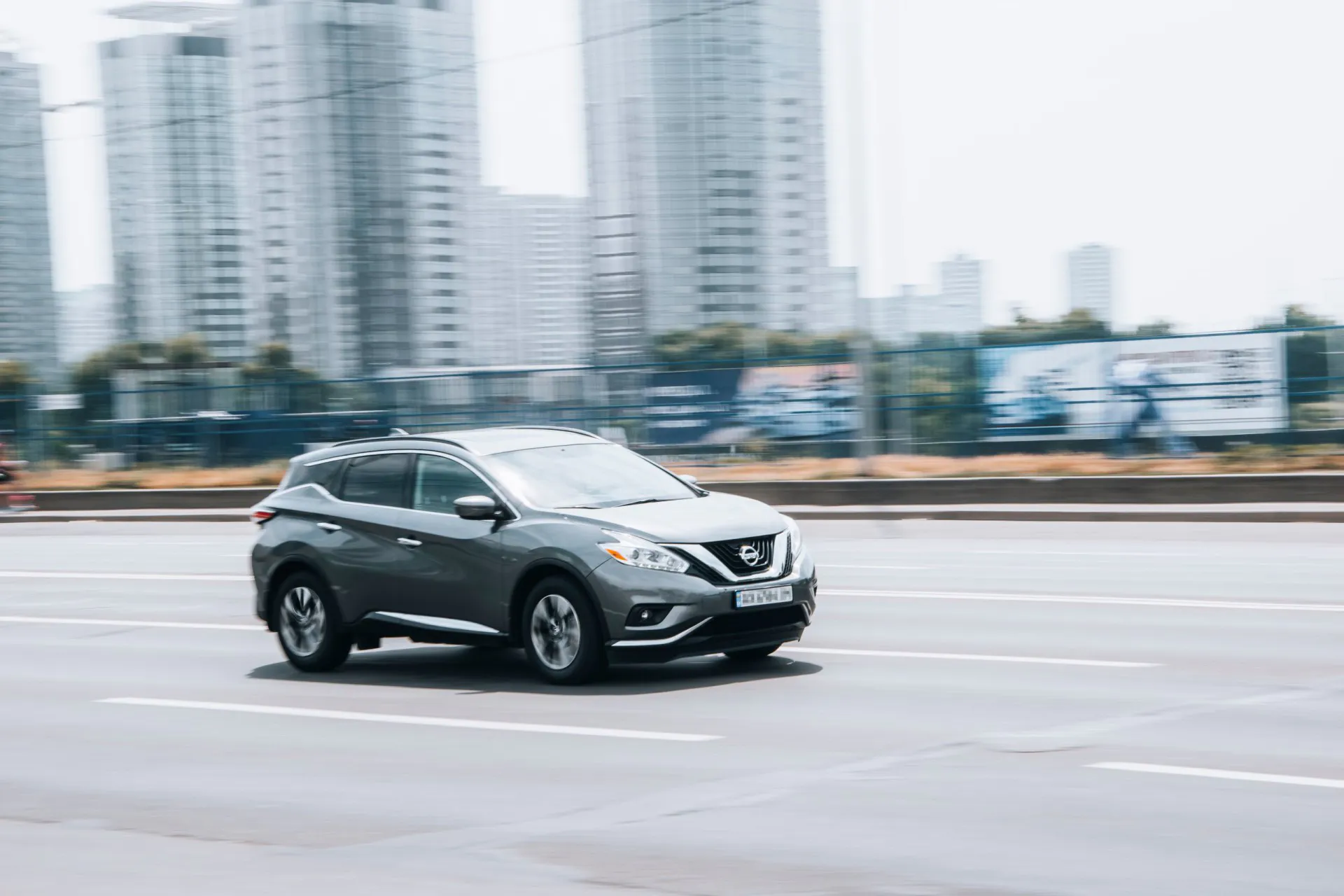
FIXD Reliability Score: 9-10/10
Owner Reliability Score: 9-10/10
KBB Value: $11,758-$26,605
Fuel Economy: 23-24 MPG
Average Annual Maintenance/Repair: $250-$625
Average Likelihood of a $500+ Repair in 2022: 100%
Safety Rating: 4.4-4.8/5
With a few exceptions (2015, 2017, and 2020—on the worst years list), most model years of the third-generation Nissan Murano are winners. These vehicles receive top-notch (9-10 out of 10) ratings for the FIXD Reliability Score and Owner Reliability Score.
That’s impressive because the surveys reveal several of these model years are well-used: the 2016 Murano has an average of 100,000 miles, while the 2018 edition has racked up 68,750 miles.
Equally notable is that no owner of a 2016, 2018-2019, or 2021 Nissan Murano reported any costly ($500+) engine or transmission repairs, including those with higher mileage.
Looking beyond a lack of major service work, this group of Muranos is also cheap to own. Owners of the 2021 model year reported spending only $250 last year to maintain their Muranos. And the 2018 version is slightly more costly, with an average of $313 spent in 2022.
Average upkeep expenses rise for the 2016 Murano, but $625 is still below the $697 for all Muranos. Meanwhile, most owners of the 2019 model year won’t complain about the average $500 needed to keep their cars on the road.
High FIXD Reliability Scores translate into few check engine lights, and most of these error codes are centered around 2016 Murano.
P0456, a leak in the evaporative (EVAP) emission control system, is common. Most of the time, this message involves the free fix of tightening the gas cap. More costly remedies can require a new gas cap ($20-$60) or EVAP line ($50-$100). Replacing a control valve ($150-$200) or the charcoal canister ($200-$600) may be in order, too.
Code P0101 is also common to the 2016 Murano and involves a faulty mass air flow (MAF) circuit. With luck, a new air filter ($50-$70) will solve the problem. However, replacing a MAF sensor ($220-$320) could be necessary. In extreme cases, a new catalytic converter ($1,720-$1,780) is needed, but the work may be covered by Nissan’s eight-year/80,000-mile emissions warranty.
It’s unusual for a catalytic converter to fail on a relatively new vehicle, which could point to poor maintenance. Be sure to get a pre-purchase inspection for any used car under consideration. This examination should include a pressure test of the catalytic converter.
This group of Muranos also deserves kudos for excellent safety ratings. The 2019 and 2021 editions scored a near-perfect 4.8 out of 5 in NHTSA testing, while the 2016 and 2018 received a still notable 4.4.
A look at recalls finds that the 2016 model year is subject to five official notices, including for a fire risk (leaking brake fluid causing a flammable incident). A quick look at the NHTSA recall website can confirm a vehicle’s recall status and determine if repairs have been completed.
The brake fluid issue goes away for later models, with the 2019 Murano having one recall and the 2018 and 2021 editions having no recalls (as of this writing).
Murano shoppers will find pricing that ranges from $15,000 to $36,000 among these models. These amounts reflect retail selling prices that vary depending on age, mileage, condition, and equipment. The cited KBB values are for private-party transactions, which are almost always lower than dealer pricing.
Many model years within this group of Muranos are available as Nissan-certified pre-owned (CPO) vehicles. You’ll pay a premium over a regular used Nissan, but you’ll get extra powertrain protection (up to seven years or 100,000 miles from the initial service date).
A Note About 2022-2023 Nissan Muranos:
There’s too little available data to determine the reliability status of the 2022-2023 Nissan Muranos. Time and more information will tell if these latest examples should be added to the best years or worst years list.
2011 and 2013 Nissan Murano
FIXD Reliability Score: 7-8/10
Owner Reliability Score: 9/10
KBB Value: $4,510-$6,423
Fuel Economy: 20 MPG
Average Annual Maintenance/Repair: $250-$500
Average Likelihood of a $500+ Repair in 2022: 100%
Safety Rating: 4.0-4.2/5
Regrettably, the bulk of the second-generation Murano model years are on the worst years list (covered below). However, there are two noteworthy exceptions, the 2011 and 2013 editions.
Respectable FIXD Reliability Scores (7-8) demonstrate reasonable dependability for decade-old vehicles, which is further confirmed by an Owner Reliability Score of 9 for both years.
And despite the age, there are no owner reports of costly powertrain problems, which is remarkable because surveys show that the 2011 Murano has an average of 150,000 miles (125,000 miles for the 2013 model year).
In addition, annual keep costs are reasonable. Owners of the 2011 Murano spent an average of $500 last year. Cut that amount in half for the 2013 Murano. We’re not saying these two Muranos will always be cheap to own. But for whatever reason, these owners enjoyed a year without major maintenance needs (like tires and brakes).
Eventually, check engine lights occur on every car, including the 2011 and 2013 Murano. The most common error code is P0101, a bad mass air flow (MAF) circuit detailed earlier.
There are also numerous instances of code P0420, a faulty catalytic converter. Another frequent emissions-control-related error message is P0455, a leak in the EVAP system (repairs are similar to P0456).
There are no recalls to date for the 2011 Murano, and the 2013 model year has just one recall (for a detached power steering hose).
If there’s anything less-ideal about the 2011 and 2013 model years, it’s the crash test scores. With 4.2 for the 2011 Murano and 4.0 for the 2013 edition, the results are far from terrible but still below most other model years.
Pricing is particularly appealing for these Muranos, with dealers charging $10,000 to $15,000 for a 2011 or 2013 example in decent condition. Given today’s volatile used car market, these Nissans represent a sweet spot for shoppers looking for an affordable modern crossover.
2005 Nissan Murano
FIXD Reliability Score: 3/10
Owner Reliability Score: 7/10
KBB Value: $2,372
Fuel Economy: 20 MPG
Average Annual Maintenance/Repair: $650
Average Likelihood of a $500+ Repair in 2022: 100%
Safety Rating: 4.3/5
We’ll be upfront. The 2005 Murano is far from perfect, as evidenced by a FIXD Reliability Score of 3. But, for those looking for a Murano for well under $10,000, it’s your only choice. Despite the subpar engine reliability rating, there are other redeeming qualities to consider about this Nissan.
Yes, an Owner Reliability Score of 7 isn’t a screaming endorsement, but survey data uncover a few other positive attributes worth talking about.
We’re surprised that an almost 20-year-old vehicle has no owner reports of expensive engine and transmission work in 2022. We even double-checked the data out of disbelief.
That’s not to say these cars are trouble-free. Some owners reported spending $500 or more to fix the electrical system or brakes. However, repairs have escaped the more costly areas. We’ll take that as a good sign.
Maintenance outlays are also reasonable. In 2022, owners of the 2005 Murano spent an average of $650. That’s not bad and is almost impressive for vehicles with 175,000 miles of use.
It’s crucial to mention that the 2005 Murano is not immune to check engine lights. Interestingly, the more frequent error codes are more unique to the 2005 model year. Except for P0420, a bad catalytic converter, we don’t see many of these codes in other model years.
P1320 indicates malfunctioning ignition coils, which cost $51-$173 to replace. Code P0720, a bad speed sensor (Nissan calls this the revolution sensor), also appears mostly in the 2005 Murano. A bad batch of components, mainly for this model year, may account for the unique concentration of these DTCs.
Like other first-generation Muranos (see below), this model year has several recalls. In fact, the 2005 Murano has six recalls, making it (along with the 2003 edition) the most-recalled Murano to date.
We’ll admit the 2005 Murano may not be an ideal used vehicle. But its record of low repair and maintenance expenses makes it a viable option for budget-conscious car shoppers.
The Worst Years of the Nissan Murano
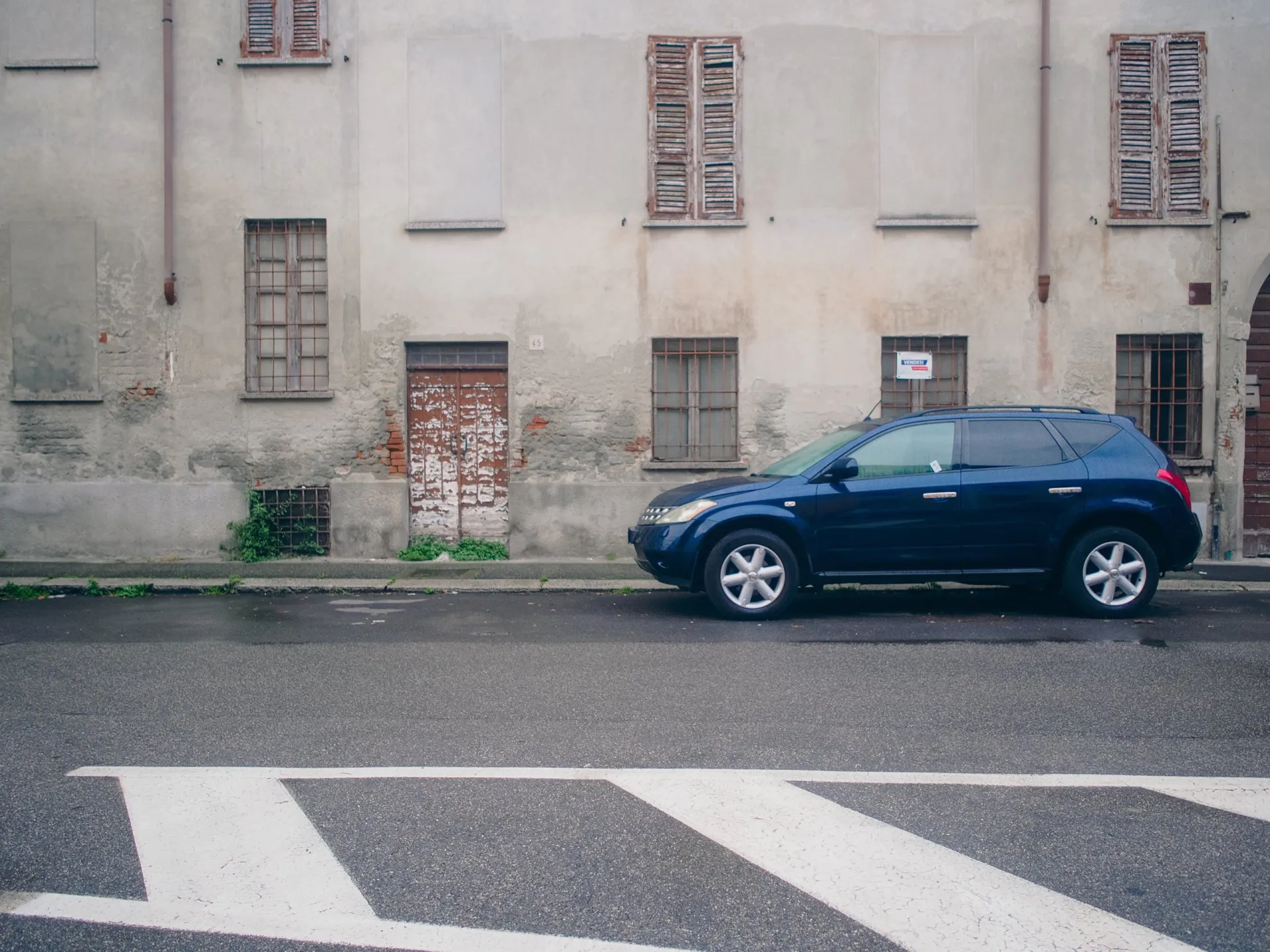
Regrettably, more than half of all Nissan Murano model years get a thumbs down. Low FIXD Reliability and Owner Reliability Scores, costly repairs, high maintenance expenses, and other factors are reasons not to include these crossovers on your shopping list.
2003-2004 and 2006-2007 Nissan Murano
FIXD Reliability Score: 1-3/10
Owner Reliability Score: 5-8/10
KBB Value: $1,852-$3,248
Fuel Economy: 20 MPG
Average Annual Maintenance/Repair: $875-$1,050
Average Likelihood of a $500+ Repair in 2022: 67%-100%
Safety Rating: 4.2-4.7/5
Except for the 2005 model year (covered earlier), the first-generation Nissan Murano is a bust. This starts with staying away from the first year of an all-new vehicle or generation, as debut vehicles can be prone to problems.
That means the 2003 model year shouldn’t be on your list of used Muranos—a FIXD Reliability Score of 2 further seals its fate. Scores are equally bad for the later examples from this group, with the 2004 Murano receiving a bottom-of-the-barrel 1 for FIXD Reliability. The 2006-2007 model years aren’t much better; they’re ranked with a 3.
Owner Reliability Scores from 5-8 may seem encouraging. But any optimism here is quickly dashed when survey data reveals the extent of expensive engine repairs. One in five surveyed owners of a 2004, 2006, or 2007 Murano spent at least $500 last year on engine repairs. Meanwhile, 15% of those with a 2006-2007 model year incurred costly transmission repairs.
Overall, these unfavorable odds don’t encourage a smooth ownership experience for the Muranos from 2003-2004 and 2006-2007.
Maintenance costs don’t make owning one of these Nissan any better. Yearly upkeep expenses are well above the $697 average for all model years. Specifically, the 2004 Murano crosses the $1,000 threshold ($1,050), and the 2007 edition comes close ($985).
Let’s move on to DTCs and the first-generation Nissan Murano. To begin with, the 2007 model year has the second-highest number of check engine lights than any Nissan Murano with an installed FIXD sensor.
Further, all model years in this worst years grouping are known to have trouble with the catalytic converter, code P0420. This is unfortunate because replacing this component can be almost half what these older Muranos are worth.
P0300 is another frequent cause of check engine lights in first-generation Muranos. This error message deals with a potentially serious engine misfire. At a minimum, repairs might require installing new spark plugs ($66-$250), spark plug wires ($180-$240), or ignition coils ($230-$640). The solution may be sealing a vacuum leak ($100-$200). However, replacing the fuel pump ($1,300-$1,700) or the fuel injectors ($1,500-$1,900) could be part of the process.
Muranos are also prone to seeing code P0011, a problem with intake camshaft timing (a stop-driving immediately situation). At best, an oil change ($20-$60) could correct things. And sometimes, a new oil control valve or variable valve timing control solenoid is needed ($300-$400). In a worst-case scenario, a new engine is the answer, with costs starting at $3,000.
It hardly seems worth mentioning recalls when engine replacements creep into the conversation, but this information is useful, especially if you own a first-generation Murano.
There are six recalls for the 2003 model year, while the 2004 and 2006 editions have four each. Recalls dropped to two for the 2007 Murano.
2009-2010, 2012, and 2014 Nissan Murano
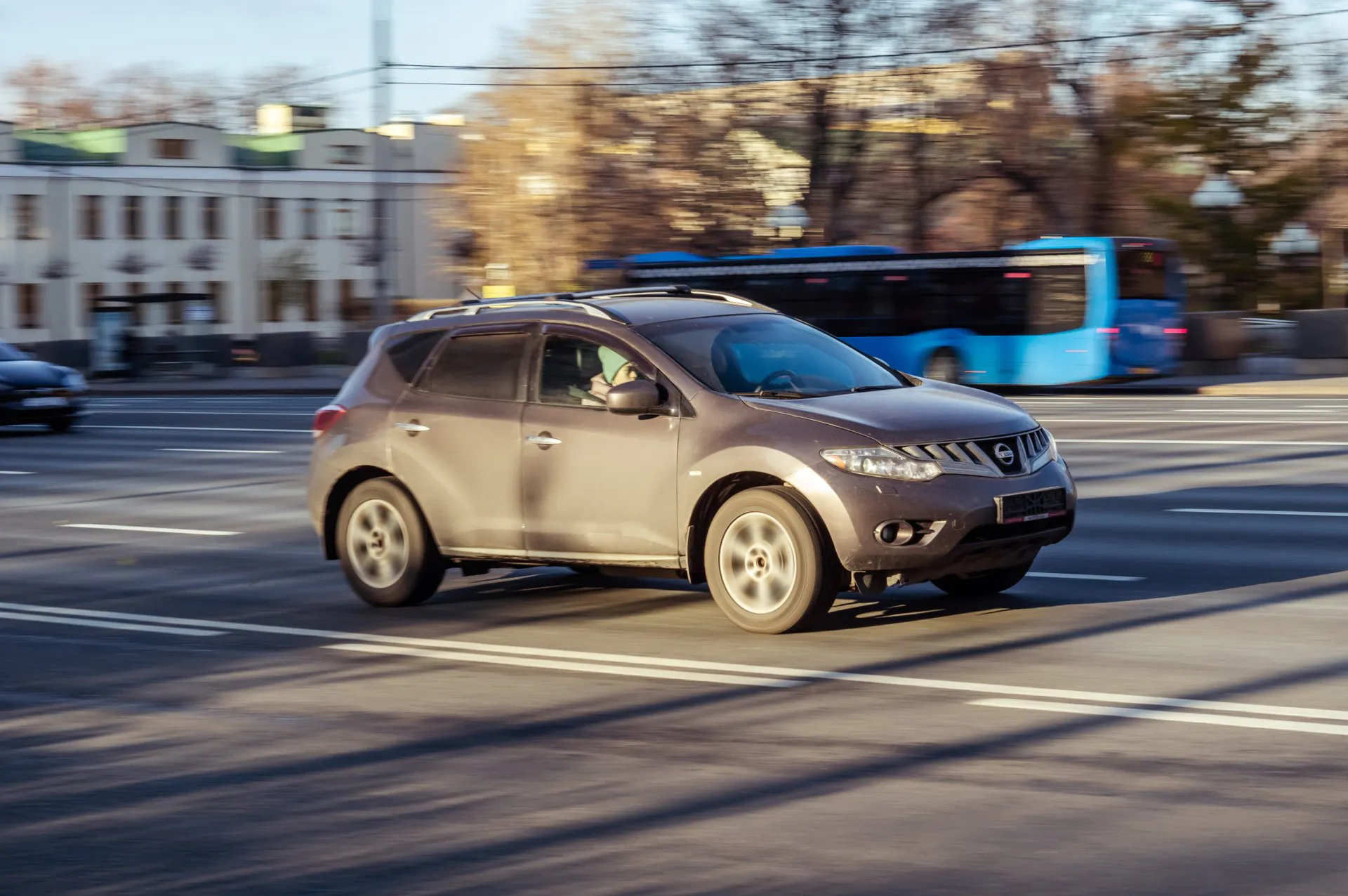
FIXD Reliability Score: 3-7/10
Owner Reliability Score: 7-8/10
KBB Value: $4,086-$7,416
Fuel Economy: 20 MPG
Average Annual Maintenance/Repair: $500-$1,286
Average Likelihood of a $500+ Repair in 2022: 77%-100%
Safety Rating: 4.0-4.3/5
While not as bad as most of the first-generation Muranos, the majority of the second-generation model years fail to make the grade. This isn’t because of terrible poor FIXD Reliability or Owner Reliability Scores. These Nissans actually do reasonably well in these areas.
Instead, the elevated number of engine and transmission repairs doom the 2009-2010, 2012, and 2014 Nissan Muranos. Due to engine troubles, 20% of surveyed owners with a 2009 or 2010 had a $500 or larger service bill. The numbers are almost the same for the transmissions in the 2012 and 2014 versions.
The maintenance costs for these Nissan are among the highest of all Murano model years. Surveys show that with $1,286 in upkeep costs last year, the 2012 model year is the priciest to maintain. The 2009 and 2010 editions aren’t cheap to own either, with $929 and $1,100 annual repair bills (respectively).
We also need to call out the 2009 Murano again, and not in a good way. Not only is it the first year of the second generation (remember what we said about first-year models?), but it has the misfortune of having more check engine lights than any other Murano model year with a FIXD sensor. It’s double the error code occurrences compared to the runner-up (2007).
And while some error codes (like for a dead battery or loose gas cap) aren’t attributable to reliability, most check engine lights can be tied into dependability (or a lack of it).
There’s no shortage of familiar error codes with this cluster of worst year Nissan Muranos. Primarily, this centers around P0420 (a problematic catalytic converter). However, a pair of other DTCs become part of the dialogue. P0171 and P0174 deal with a lean fuel mixture (too much air or insufficient fuel) and involve a laundry list of possible repairs.
Cleaning the MAF sensor ($100) or stopping a vacuum or exhaust leak ($100-$200) can correct things for the least amount of money. More elaborate steps include replacing the MAF sensor ($300), air-fuel or oxygen sensor ($200-$300), fuel pressure regulator ($200-$400), or fuel pump.
The 2009 Murano is hit with nine recalls, but the tallies are less for subsequent years. The 2012 and 2014 have one each, while there are zero recalls for the 2010 Murano.
2015, 2017, and 2020 Nissan Murano
FIXD Reliability Score: 6-9/10
Owner Reliability Score: 9-10/10
KBB Value: $11,897-$22,956
Fuel Economy: 23-24 MPG
Average Annual Maintenance/Repair: $375-$778
Average Likelihood of a $500+ Repair in 2022: 83%-100%
Safety Rating: 4.4-4.8/5
You could do worse than the 2015, 2017, and 2020 Nissan Murano (we’ve already covered those in earlier entries on the worst years list). On the surface, these members of the third-generation Murano set appear worthy. They’ve got notable FIXD Reliability and Owner Reliability Scores, strong safety ratings, and decent fuel economy. Maintenance costs are average or below, too.
But a dive into the data reveals a worrisome problem that overrides all the other ratings. The FIXD surveys show powertrain problems, which shouldn’t be part of the discussion for newer vehicles like these.
As the first year of the third generation, the 2015 Murano gets assigned to the worst years penalty box by default. This is backed up by the 14% of survey owners encountering expensive engine work in 2022. A similar number of 2020 Murano owners had the same problem.
In addition, 13% of surveyed owners with a 2017 Murano had transmission troubles that cost at least $500 to fix. The 2020 edition has the double whammy of having 11% of owners also dealing with expensive transmission repairs.
In older vehicles, these problem rates might be tolerable. But they’re inexcusable with newer cars like the 2015, 2017, and 2020 Murano.
Newness doesn’t ward off check engine lights with these Nissans. Codes P0456 (a leak in the EVAP system), P0101 (a bad MAF circuit), and P0300 (engine misfires) are among the frequent error messages known to occur in the 2015, 2017, and 2020 Muranos.
Recalls start high with five for the 2015 Murano but decrease for subsequent years. There are three recalls for the 2017 model year and two for the 2020 edition.
FAQs
What years of the Nissan Murano have engine and/or transmission problems?
Nissan Muranos from the 2004, 2006-2007, 2010, 2012, 2014-2015, 2017, and 2020 model years are vulnerable to expensive engine problems. The 2006-2007, 2012, 2014, 2017, and 2020 model years are known to have transmission issues.
What is considered high mileage for a Nissan Murano?
A look at the FIXD survey research shows that the Murano is capable of solid six-figure usage. Average mileage among these surveyed vehicles includes 200,000 miles for the 2003 model year and 175,000 miles for the 2005 Murano. Several other model years approached or exceeded the 150,000-mile mark.
Among all the analyzed Muranos, these Nissans have an average of 114,000 miles. This creates an excellent dividing line between regular and high-mileage usage. We’ll set the high-mileage bar at 115,000 miles for simplicity’s sake.
So, how much life is left in a Murano with 115,000 miles? The answer is it depends on the individual vehicle. A well-cared-for example with 150,000 miles of mostly highway use is likely to keep running for tens of thousands of more miles. The data shows this is possible. On the other hand, a 100,000-mile Murano that’s regularly overdue for scheduled maintenance and has only been used in stop-and-go traffic could be on its last legs.
A professional mechanic is the best person to determine the longevity of a used Murano or any vehicle. Getting a pre-purchase inspection should be standard practice for every used car shopper.
What other vehicles should I consider?
Nissan fans wanting a different crossover/SUV other than the Murano can choose the larger Pathfinder and Armada, or go smaller with the Rogue, Rogue Sport, or Kicks.
Outside of the Nissan brand, there are many alternatives for two-row mid-sized utilities. Options include the Ford Edge, Honda Passport, Jeep Grand Cherokee, Toyota 4Runner, and Volkswagen Atlas Cross.
What owners of the Nissan Murano like to use their cars for:
| Frequent Use Categories: | How Useful? (Out of 5 Stars) |
| Family Vehicle | ***** |
| Lots of Driving (travel/long commute) | *** |
| Luxurious Driving | * |
| Hauling/Towing | * |
| Office on Wheels | * |
| Outdoor/Off-Road | * |
| Sport/Fast Driving | * |
A Note About Data and Information Sources
This article has many details about Nissan Murano reliability; here’s what we used for our assumptions and recommendations.
- FIXD Reliability Score & Data: Engine reliability information is captured via the FIXD App.
The FIXD Reliability Score is calculated using the number of DTCs per year, weighted by mileage. This is then turned into a scale of 1-10 for easy graphing.
This is an objective score.
- Owner Reliability Score & Data: This data is the result of surveying Nissan Murano owners who use FIXD.
The Owner Reliability Score comes straight from the owners of the Nissan Murano.
This is a subjective score.
To determine the Owner Reliability Score, we ask each car owner:
How reliable would you say your Nissan Murano is?
a. Just point A to point B driving
b. A Daily Commuter
c. Good for a 100-mile road trip
d. Good for a 500-mile road trip
e. I could take a cross-country road trip, no problem
From here, we translate their answers into the Owner Reliability Score:
a. = 2
b. = 4
c. = 6
d. = 8
e. = 10
Keep in mind owners may think their car is more or less reliable than it actually is.
One potential problem is that people often buy the same make or model they are used to when they go car shopping, just a newer year.
Ford, for instance, has a number of consumer loyalty awards for the Ford F-Series, Ford Mustang, and Ford Expedition.
Car owners may be so loyal to the make or model they currently own that they would have trouble accurately comparing their cars’ reliability to others.
It’s for this reason that we ask car owners a question that is relative to mileage rather than relative to other cars.
Still, be mindful of the accuracy of these Owner Reliability Scores; people’s perceptions and unconscious blindspots can skew data.
We suggest looking at both the FIXD Reliability Score and the Owner Reliability Score for this reason.
- KBB Value: Average private-seller valuations as supplied by Kelley Blue Book (KBB), based on a Nissan Murano with typical mileage for that respective model year.
- Fuel Economy: Mileage-per-gallon estimates according to the EPA MPG on Fueleconomy.gov
- Annual Maintenance/Repair: Upkeep expenses as reported by surveyed Nissan Murano owners
- Safety Rating: Crash test data collected and reported by NHTSA. We average all ratings for each year to come up with a simplified, average safety score. This makes it easier to look at on a graph.
References
- Nissan Murano model-specific information, edmunds.com (various dates). Retrieved July 7, 2023, from https://www.edmunds.com/
- Model-specific recall information as per the National Highway Transportation Safety Administration (NHTSA). Retrieved July 7, 2023, from https://www.nhtsa.gov/recalls
- Nissan Certified Pre-Owned Program Information. Retrieved July 7, 2023, from https://www.nissanusa.com/shopping-tools/certified-pre-owned.html
- 2019 Nissan Warranty Information Booklet. Retrieved July 7, 2023, from https://www.nissanusa.com/content/dam/Nissan/us/manuals-and-guides/shared/2019/2019-nissan-warranty-booklet.pdf

Dave Goldberg is an automotive journalist and lifelong car fanatic. He writes for numerous enthusiast and business outlets and is an ongoing contributor to HotCars.com, one of the most popular car culture websites. When he’s not writing or driving, Dave is either under a hood or asleep. His credentials include a BA in Journalism from The George Washington University.

